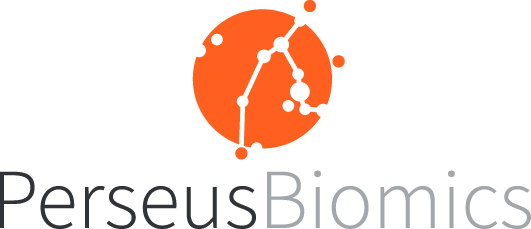Exploring the importance of strain-level variations in the microbiome
Welcome back, fellow microbe enthusiasts! In our previous exploration, we delved into the world of microbial strains and their significance in understanding the microbiome.
Let’s recap the main points…To truly understand the intricacies of the microbiome and its relationship with health and disease, strain resolution is a requirement to see the full picture. By resolving strains, researchers gain critical insights into the genetic diversity, functional capabilities, and interactions of microorganisms in their natural habitats. Overlooking strain resolution can have profound consequences in microbiome research. Without accurately identifying and characterizing microbial strains, analysis and interpretation of microbiome data may lead to incomplete and misleading conclusions. This lack of resolution hinders our understanding of microbial functions, interactions, and their impact on human health outcomes.
Why strain resolution matters?
Strain resolution has paved the way for significant discoveries in microbiome research, revolutionizing our understanding of the microbial world. For instance, in the realm of food safety, strain resolution has led to the identification of specific strains of pathogenic bacteria responsible for outbreaks, enabling targeted interventions and prevention strategies. In the field of nutrition and therapeutics, microbiome science at strain-level plays a crucial role in the development of very specific live biotherapeutic products (LBP), probiotics that are strains with specific and desired traits to increase resilience, restore microbial balance and combat the proliferation of undesired microbes.
Strain resolution in microbiome research has significant implications beyond conventional medicine, enabling the development of strain-specific probiotics and therapeutics. By identifying specific strains linked to health or disease, researchers can create personalized interventions to restore microbial balance, modulate immune responses, and treat various conditions. This detailed understanding of strain-level diversity allows researchers to pinpoint the roles of individual strains in disease development and progression. Understanding these strain-specific associations opens doors to personalized medicine and targeted interventions, where treatments can be tailored to individuals based on their unique microbial profiles.
Extensive research on the human microbiome has shown its links with human pathologies, especially obesity, cancer, mental health issues, allergies, celiac disease, autism, type 2 diabetes mellitus, inflammatory bowel disease, gingivitis and periodontitis, which are associated with alterations (also referred to as dysbiosis) in microbial communities¹.
Personalized medicine and probiotics
The gut microbiome plays a crucial role in the pathogenesis and treatment of IBD, such as Crohn's disease and ulcerative colitis². Research has shown that specific bacterial strains, rather than broad microbial communities, are responsible for the therapeutic effects observed in patients. Identifying and characterizing these beneficial strains can lead to the development of more effective, strain-specific probiotic treatments. For instance, the strain Faecalibacterium prausnitzii has been linked to anti-inflammatory properties that can help manage IBD and counterbalance dybiosis in the gut ³ ⁴. Additionally when fecal samples were profiled from IBD patients pre- and post- treatment with a multi-strain probiotic, specific strains responsible were found to contribute to the clinical efficacy observed⁵. These studies show that using strain-level resolution to pinpoint these beneficial bacteria can help lead to tailored probiotic therapies that improve patient outcomes.
The microbiome and cancer therapy
The gut microbiome has also been shown to significantly affect the response to cancer immunotherapy, particularly checkpoint inhibitors⁶. Certain bacterial strains can enhance the immune system's ability to fight cancer, while others may inhibit it. Identifying the specific strains that modulate immune responses can lead to more effective cancer treatments ⁷ ⁸. For example, studies have shown that the presence of Bifidobacterium strains is associated with improved responses to anti-PD-1 therapy in melanoma patients⁶. Further characterization of Bifidobacterium isolates identified a strain, B. longum subsp. longum, capable of potentiating PD-L1 blockade in mice through IL-12 induction⁸. Another study profiled responders to CTLA-4 blockade, identifying Faecalibacterium prausnitzii strains with anti-tumoral immune effects through IL-12 and NK cell stimulation⁹. These proof-of-concept studies exemplify how strain-level insights can enable development of microbiome-based strategies to augment cancer immunotherapy.
Where do we go from here?
As we delve deeper into the complexities of the microbiome, achieving strain-level resolution becomes paramount.
While shotgun sequencing enables untargeted metagenomic with a taxonomic resolution down to strain-level, it is notably complex, resources intensive and slow. What about 16S? It simply has insufficient resolution to discriminate strains as it only looks at a single, short section of the bacterial genomes, insufficient to capture the uniqueness of strains. What about PCR? PCR assays can be designed to be strain specific but PCR but are resource intensive to design, challenging to validate in wet-lab and its price scales linearly with the number of targets, making it cost-inefficient to screen several hundreds of strains from a sample.
And this is where DynaMAP enters the show as it offers a cutting-edge solution for this very challenge. By employing optical mapping of and the fluorocoding of native DNA molecules, DynaMAP™ accurately identifies strain-specific signatures without without requiring the amplification, library preparation or sequencing the DNA.
The principle of strain-resolution analysis without sequencing and PCR.
Unlike eukaryotes, prokaryote are characterized by extensive intraspecies variations. Strains within a same species have similar genetic content (>98% average nucleotide identity) but can display very different genome structures. DynaMAP leverages prokaryotes’ intraspecies genome structure heterogeneity for microbiome profiling: patterns formed by the locations of short nucleotide motifs (4- to 6-mer) along large microbial DNA molecules (>25kbp) create robust taxonomic barcodes that are highly specific to microbial strains can thus be used for high-resolution taxonomic classification.
How it actually works:
On thousands of genome, the position of 4-nucleotide motifs (e.g.‘TCGA’) along each genome are mapped into a reference database. The patterns formed by TCGA create taxonomic barcodes of expected fluorescence intensity.
The actual fluorescence intensities of fluorocoded DNA molecules from complex microbiome samples are matched to the database of reference genomes to create the taxonomic profile of a sample in <30 minutes
Optical mapping is an elegant data-reduction method to extract genetic and taxonomic information from metagenomic DNA, without requiring to sequence every single nucleotide. DynaMAP can co-detect and provide relative abundance of thousands of different microbes in a single sample thanks to the high specificity of the taxonomic barcodes.
DynaMAP provides high-resolution, actionable insights rapidly, enhancing our understanding of microbial diversity and mechanisms that shape our well-being. With DynaMAP, researchers can embrace the power of strain resolution, fueling groundbreaking discoveries and empowering personalized interventions that harness the full potential of the microbiome.
References:

